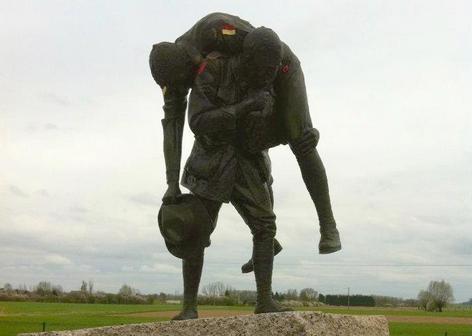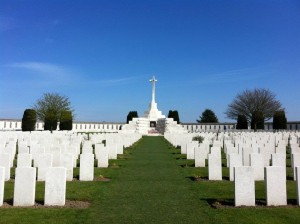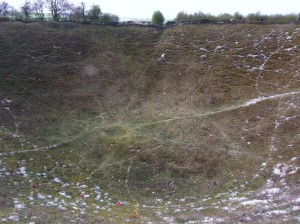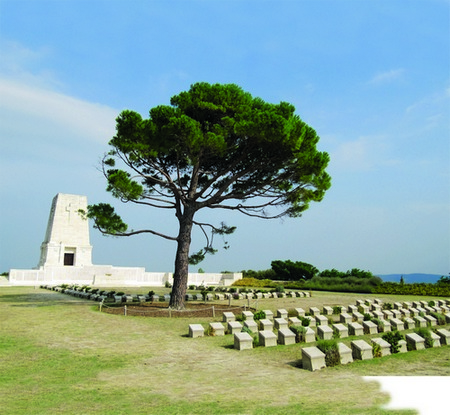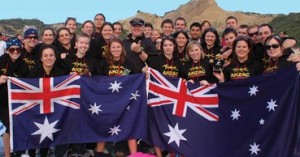France: All quiet on the Western Front
Thursday, April 12th, 2012Given the opportunity to travel to southern Belgium and Northern France to visit the battlefields, cemeteries and memorials from WWI was always going to be a special adventure. As we boarded our coach, which would be our mode of transport for the next few days, a wave of anticipation was flowing through me.
Not only were we going to visit some very special places, it gave us a chance to reflect on the events which occurred almost 100 years ago.For most of us we learn about the ‘Great War”, as it is often referred to, in high school. As we get older, some of us may gain a better understanding of what went on over here and why or what for. Not many of us, however, get the chance to visit the battlefields to pay our respects and to gain an intimate understanding of the sacrifices made by so many.
The first stop really set the tone for the rest of the trip: Tyne Cot, the largest Commonwealth Cemetery on the western front. Walking through the thousands of headstones, some marked ‘known unto god’, really hammers home the vast number of young men who paid the ultimate sacrifice for their country. Most of them volunteers.When reaching the end of the cemetery, the memorial to the missing with over 30,000 names whose bodies were never recovered, ensures a sombre end to our visit. Not much conversation is heard on the coach. The mood of reflection and sadness is tangible.
Next we make out way to one of the few German cemeteries in the area. Langemark was an area where 40,000 Germans lost their lives in a single battle, 3,000 of them being students not yet 18. It really hammers home the fact that there are always two sides to a war, and it was not just ‘us’ who suffered. The sheer number of casualties meant the British army had no choice but to bury the German soldiers here, one mass grave contained 25,000 bodies.
After dinner we make our way to the Menin Gate in Ypres, a town which saw 5 million Commonwealth soldiers walk through in the years of war, some of them never to return home. It is hard to imagine that this beautiful place was reduced to ruin throughout the war. However, it is here that every night at 8pm since 1928, the Last Post Ceremony has taken place.We were lucky enough to witness a regiment from Canada perform a military parade and place poppy wreaths at the foot of the memorial. Some 55,000 Commonwealth soldier’s names are inscribed into the gate, all with no known grave.
The following morning we travel back to the battlefields of Ypres, where we head to Hill 60, famous for being a place where Australian troops literally fought underground. Tunnelling their way into German territory to strike a decisive blow by literally blowing the top of the hill, with half a million kgs of explosives.
Walking through the preserved battlefields, past fragments of old explosives, bunkers and mine craters, is an experience Ill never forget. The sheer size of the crater left form the explosion takes your breath away.
As we head to our next memorial I am to meet a local called Johan. Expecting to be greeted in French or Flemish, I get a ‘G’day mate’.
Taken aback a little at first, over the next three hours it is evident that the war, in particular the Anzacs part in the war, have changed Johan’s live considerably.Johan lives on the edge of a wood where the front line once stood. There is a beautiful memorial and cemetery with thousands of Commonwealth graves, and one of the largest New Zealand memorials on the western front.
But that is not what makes Johan so special. Johan has dedicated his live to finding as many soldiers remains as possible. Mass graves exist everywhere here, and Johan tells of one story in particular that has the group on the edge of their seats.
Johan recently found the remains of an Australian soldier, thought to have died 90 years ago. News of this hit Australian media, and within 12 months, Johan was united with the family members of the soldier whom he discovered. An incredible story and an incredible man, Johan’s life long ambition is to open a visitors’ centre across form his restaurant. Still while searching for more soldiers.
On our third day, the whether sets in: dark, windy and rainy. I remind our group that we have the comfort of our coach, and to give some thought to how the soldiers must have felt. It is freezing outside.
After visiting more memorials in the morning, this afternoon we are to head to Thiepval memorial park. Thiepval is a special place for the British as it is where they lost 20,000 men in one day. The exhibition is one of the best on the western front, and outlines events of the war, in particular, the Battle of the Somme.
Walking under the vast expanse of the memorial to the missing, I make my way to the rear, where lies a small cemetery of British and French graves. Some 600 graves are located here, many of them found decades after the war. A fact that demonstrates how many men were still to be found decades after fighting ended, or indeed are still to be found today.
We move on to an area of 100 acres of preserved battlefield, where we are able to walk through trenches left behind. The wind and rain picks up as we meander through at a leisurely pace, stopping along the way to visit memorials to the Canadian and Scots who lost their lives on this very field. Once again, the mood on the coach is sombre. Our fourth and final day of this incredible journey takes us to a small village called Villers-Bretonneux. A place etched in the memory of the Anzacs, as it was here on the night of April 24-25, three years after landing in Gallipoli, Australian troops moved up over fields to capture the village from the Germans, and strike a decisive blow for the Allied cause.On the hill above Villers-Bretonneux, now stands the Australian memorial. Where each year on April 25, a dawn service is held to remember our fallen.
For me, it was a journey of remembrance, of reflection and understanding. For others it may be a pilgrimage, a right of passage. Whatever the reason, making the effort to visit this area will be a life changing experience.
Lest We Forget
***
Visit the Western Front on Topdeck' s commemorative Western Front Easter trip leaving 29 March 2013 and the Anzac Day Western Front trip leaving 23 April 2013.
